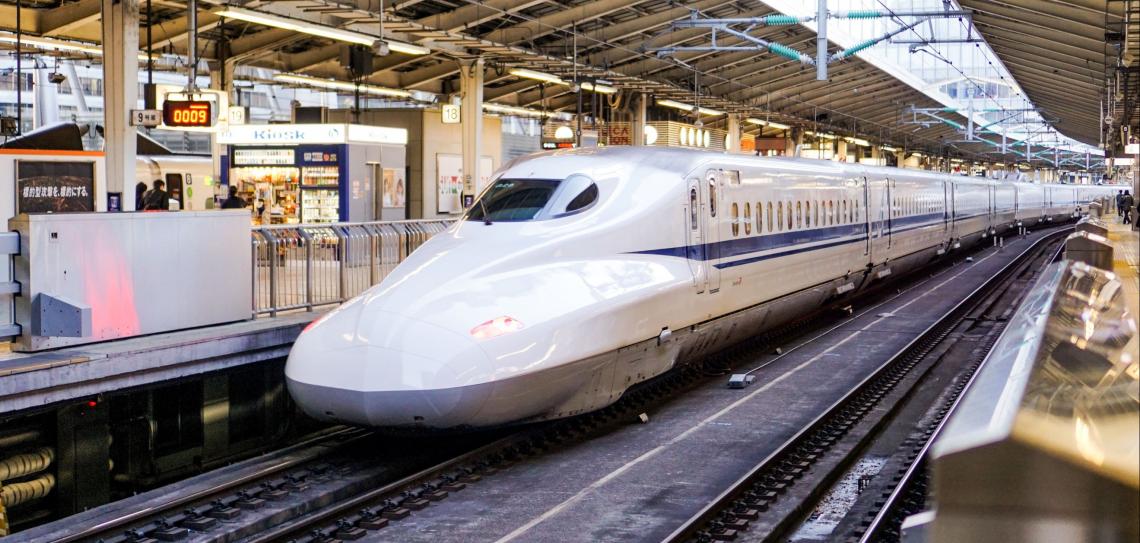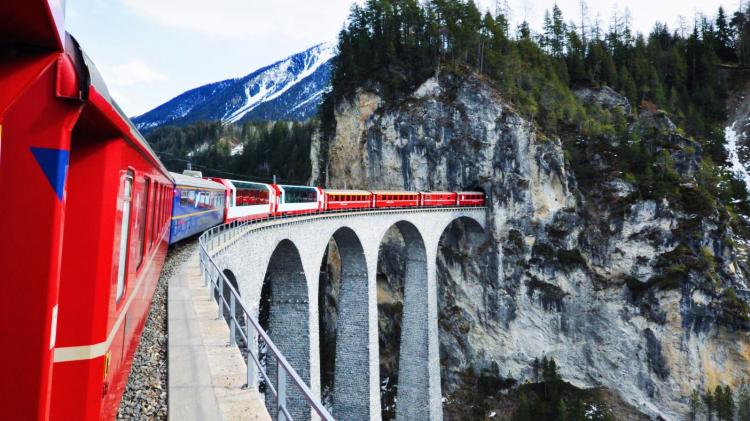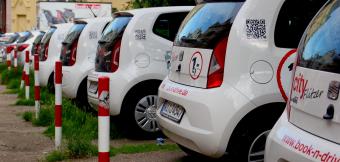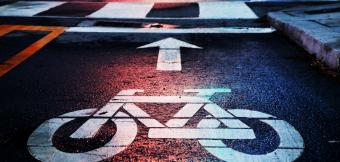
Catch the train not the plane
Trains are a fast, comfortable and fun way to travel, producing less than 15% of the CO2 per passenger kilometre of planes. They generally create less CO2 than cars, even electric ones. When combined with bus, bike or ferry travel, trains enable convenient low carbon transport over long distances.

Short, medium and long journeys
This action is about medium distance journeys (20 to 500 km), and discusses the train as an alternative to flying or driving. For shorter journeys, consider cycling, walking or a local bus or train. For longer journeys, there may be no alternative to flying, but consider if you really need to take the journey at all.
Carbon emissions: train vs plane
Air travel is the fastest growing contributor to global warming, and much of this growth is for journeys less than 500 km. Avoiding a flight when there is a good alternative is one of the best things you can do to reduce your climate impact. The UK Department of Energy and Climate Change (DECC) calculates CO2e output for all types of transport, as shown below. You can calculate the carbon impact of your own journeys at Ecopassenger.
Grams of CO2e per passenger km:
Train - international = 12 g
Small car, plug-in hybrid, four passengers = 18g
Ferry - on foot = 18g
Coach = 28g
Small car, petrol, four passengers = 39g
Train - local or national, UK = 44g
Small car, plug-in hybrid, one passenger = 70g
Local bus = 101g
Ferry - with car = 130g
Small car, petrol, one passenger = 155g
Flight - long haul, economy class = 179g
Flight - domestic, economy class = 330g
Flight - long haul, first class= 650g
NB: these figures do not include the embedded CO2 of cars; see Action 16: ‘Use an Electric Vehicle’ for an explanation.

Sleepers, ferries, coaches and bikes
Sleeper trains link many European cities and the longest rail route in the world, the Trans-Siberian, is a sleeper. How do sleepers compare to planes? Well, they're a lot slower and can be more expensive. But on climate change they win hands down. The key thing is to change your perception of travel and to see the train journey as an enjoyable part of the holiday (or even the whole holiday!) rather than rushing to your destination. Take the time to read, listen to music, work, sleep, and enjoy the view. You’ll also eliminate the problems of jet lag, air sickness and fear of flying.
Ferries are an excellent way to connect up the train parts of your journey and are also great fun (in calm weather anyway!). Coaches are less comfortable, especially over long distances, but are generally the cheapest way to travel. Both are a fantastic choice for the climate compared to planes or cars.
Rules and tickets vary from country to country, but it’s possible to take your bike with you on many routes. On commuter rail journeys you could consider a folding bike which you can keep with you, on longer journeys your bike will need to go in a special rack or in the luggage van. Connecting up bike, train and ferry journeys is an enjoyable way to travel and has huge climate change benefits too.
Carbon emissions: Train vs. car
This all comes down to occupancy. A single passenger in a car will always produce more CO2 than a single passenger on a train, but four people in a small petrol car would produce about the same (39g per km) as going by train and a lot less than going by plane (330g per km). So if your friend is determined to make a journey by car and offers you a lift, take it; your personal CO2 emissions will be almost zero. However, it’s still generally better not to own a car and use train, coach, bus, ferry, feet or bike instead.
The myth of carbon offsetting
Carbon offsetting is the idea that by giving money to plant trees or build wind farms, the carbon your flight has generated can be counteracted. However, carbon offsetting is deeply flawed. There's no guarantee your money is going to real carbon offsetting activities, that they will be managed effectively long-term or monitored to check the actual carbon offset. Newly planted trees take many years to absorb the carbon that your flight releases right now. There is a finite limit on the number of trees and wind farms that can be planted and offsetting implies we can carry on our climate damaging activities, whereas what we actually need is radical change in our carbon hungry lifestyles.
Picture credits: 1) Fikri Rasyid - unsplash.com 2) Jad Limcaco - unsplash.com 3) Johannes Hoffman - unsplash.com
Take your holiday by train this year
Limit yourself to a maximum of one return flight each year
Organise your next conference or group holiday by train
Campaign for quality green transport including buses, bikes and trains



